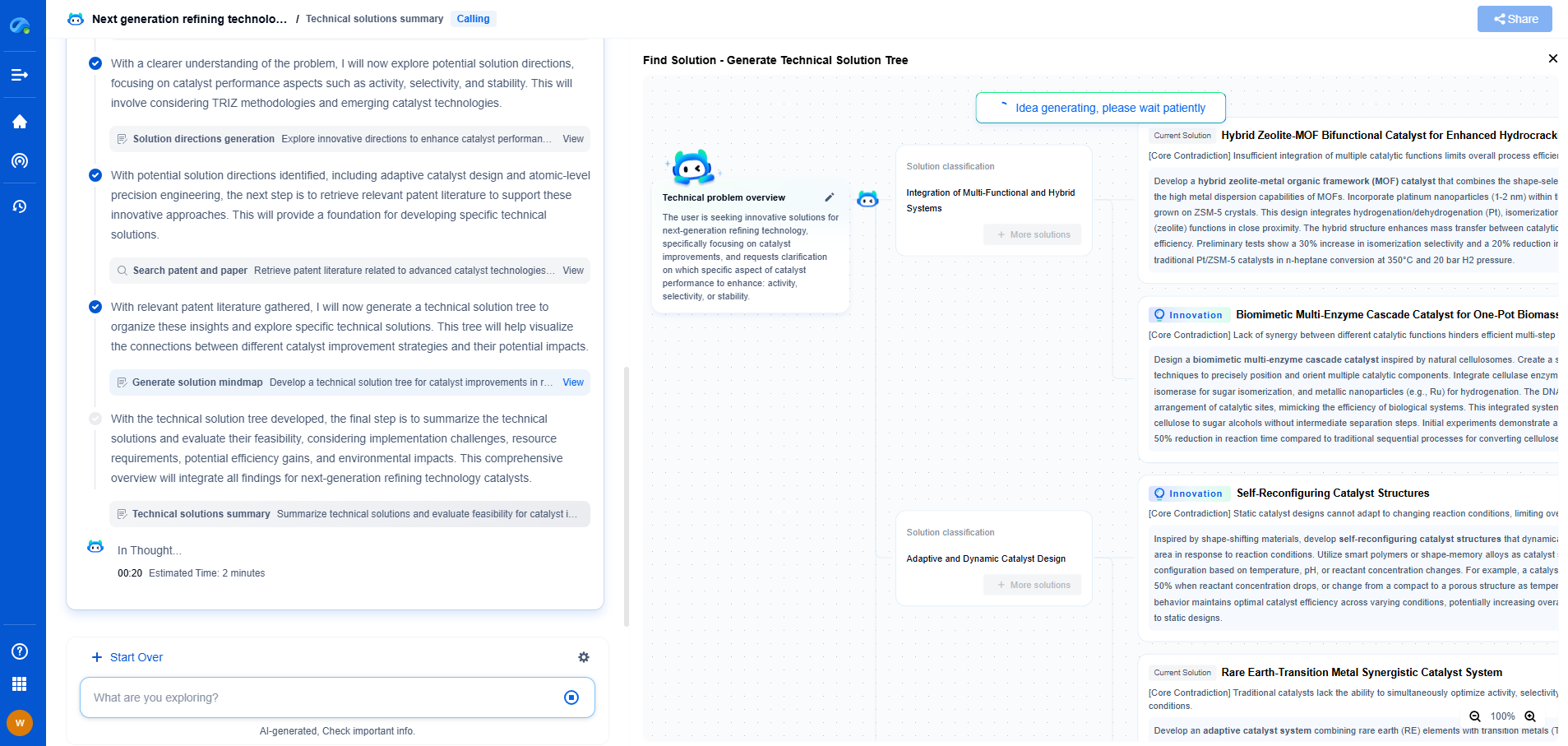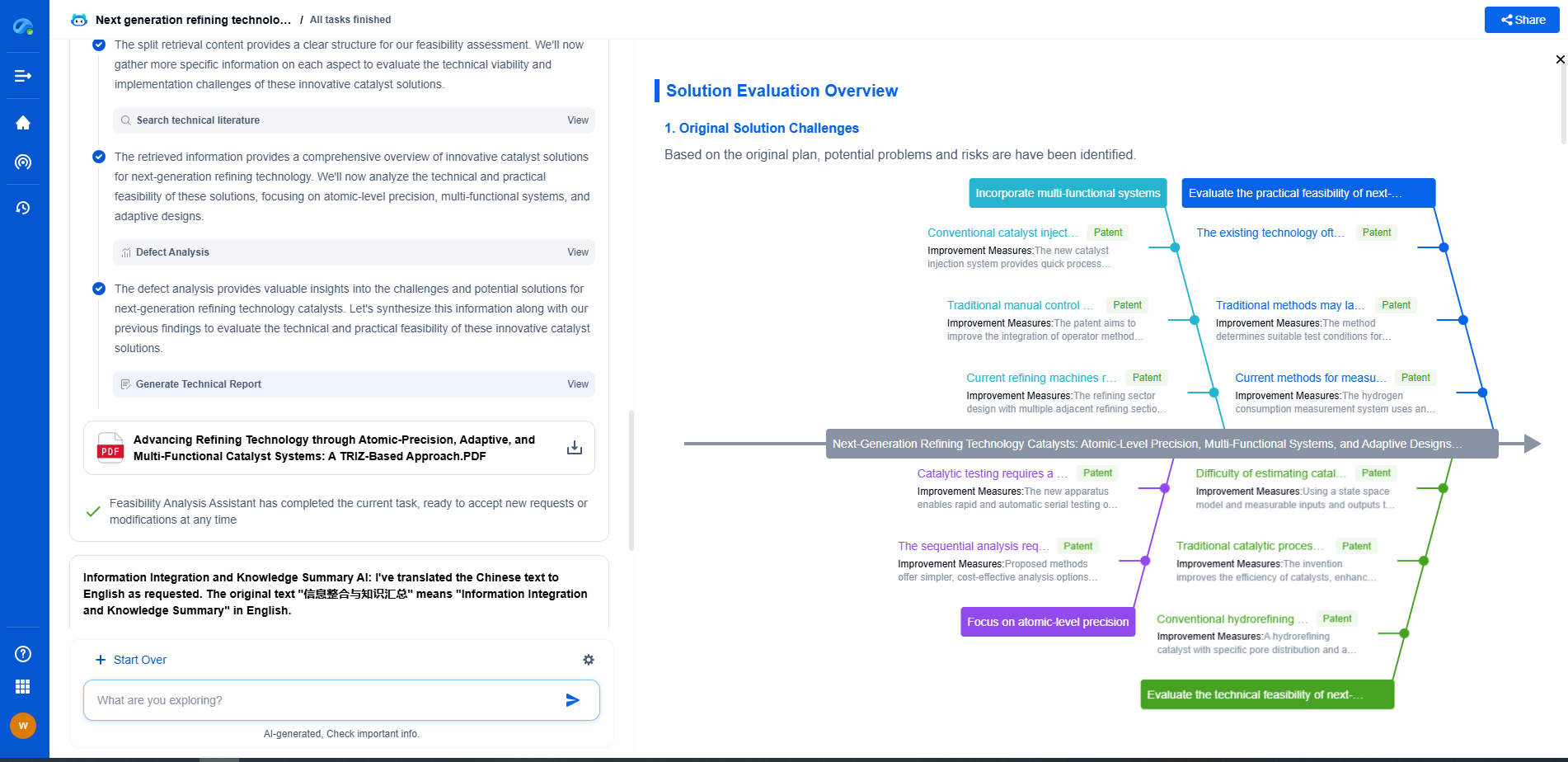GC-MS vs. HPLC for Aromatics Content Analysis: Which is Better?
JUN 19, 2025 |
In the realm of analytical chemistry, the precise analysis of aromatic compounds is crucial for various industries, including pharmaceuticals, petrochemicals, and environmental monitoring. Two prevalent methods for aromatic content analysis are Gas Chromatography-Mass Spectrometry (GC-MS) and High-Performance Liquid Chromatography (HPLC). Each technique comes with its unique set of advantages and limitations, making the choice between them dependent on specific analytical needs. This article delves into the intricacies of both GC-MS and HPLC, aiming to provide clarity on which might be better suited for aromatic content analysis.
Understanding GC-MS
Gas Chromatography-Mass Spectrometry combines the features of gas-liquid chromatography and mass spectrometry to identify different substances within a test sample. GC-MS is highly regarded for its ability to separate, detect, and quantify volatile and semi-volatile compounds. Its high sensitivity and specificity make it an excellent choice for aromatic analysis, where detailed molecular information is often required.
GC-MS operates by vaporizing the sample, which then passes through a chromatographic column. Compounds are separated based on their volatility and mass. The mass spectrometer further analyzes each component, providing a detailed mass spectrum for identification. GC-MS is particularly effective for analyzing low molecular weight aromatics, owing to its excellent resolution and sensitivity.
Exploring HPLC
High-Performance Liquid Chromatography is a powerful technique for separating, identifying, and quantifying compounds in a liquid sample. Unlike GC-MS, HPLC is well-suited for non-volatile and thermally unstable compounds due to its liquid-phase operation. Aromatics with higher molecular weights, which are not easily vaporized, can be effectively analyzed using HPLC.
HPLC works by passing a liquid sample through a column filled with solid adsorbent material. Compounds within the sample are separated based on their interactions with the adsorbent material, which can be fine-tuned to target specific aromatic compounds. HPLC is renowned for its versatility, allowing for the analysis of a wide range of compounds under various conditions.
Comparing Sensitivity and Specificity
When it comes to sensitivity and specificity, GC-MS generally has an edge over HPLC. GC-MS can detect compounds at very low concentrations, often in the parts-per-billion (ppb) range, while HPLC's sensitivity typically ranges from parts-per-million (ppm) to parts-per-billion, depending on the detector used. The mass spectrometric component of GC-MS provides highly specific molecular information, allowing for precise compound identification.
However, HPLC can be more suitable for complex mixtures containing high-molecular-weight aromatics or those that may degrade at high temperatures, as often required by GC-MS. The choice of method is thus dependent on the specific aromatic compounds being analyzed and the required detection limits.
Operational Considerations
Both GC-MS and HPLC require skilled personnel and careful calibration to ensure accurate results. GC-MS instruments can be more expensive due to the complexity of the mass spectrometer, but they often provide quicker analysis times for volatile compounds. HPLC, while potentially slower, offers flexibility in mobile phase and column selection, which can be tailored to the specific aromatic compounds of interest.
Sample preparation is another critical factor. GC-MS often requires derivatization of polar compounds to make them volatile, while HPLC can handle a broader range of sample types with simpler preparation.
Conclusion: Choosing the Right Technique
Ultimately, the choice between GC-MS and HPLC for aromatic content analysis hinges on the specific requirements of the analysis. GC-MS is generally preferable for low molecular weight, volatile aromatics demanding high sensitivity and specificity. On the other hand, HPLC shines in analyzing non-volatile, thermally labile compounds and offers greater flexibility in method development.
In many cases, combining both techniques can provide a comprehensive analysis, leveraging the strengths of each method. Understanding the nature of the aromatic compounds under investigation and the analytical objectives is crucial to selecting the most appropriate technique, thereby ensuring accurate and reliable results.
Discover Patsnap Eureka: AI Agents Built for Scientific Innovation
Whether you're designing the next generation of refining technologies or analyzing catalysts and process flows, keeping up with rapidly evolving research and IP data in petroleum processing is no easy task.
Patsnap Eureka, our intelligent AI assistant built for R&D professionals in high-tech sectors, empowers you with real-time expert-level analysis, technology roadmap exploration, and strategic mapping of core patents—all within a seamless, user-friendly interface.
Ready to accelerate your innovation process and make smarter, faster decisions? Discover Patsnap Eureka today and unlock the full power of confident, AI-driven innovation.
- R&D
- Intellectual Property
- Life Sciences
- Materials
- Tech Scout
- Unparalleled Data Quality
- Higher Quality Content
- 60% Fewer Hallucinations
Browse by: Latest US Patents, China's latest patents, Technical Efficacy Thesaurus, Application Domain, Technology Topic, Popular Technical Reports.
© 2025 PatSnap. All rights reserved.Legal|Privacy policy|Modern Slavery Act Transparency Statement|Sitemap|About US| Contact US: help@patsnap.com

